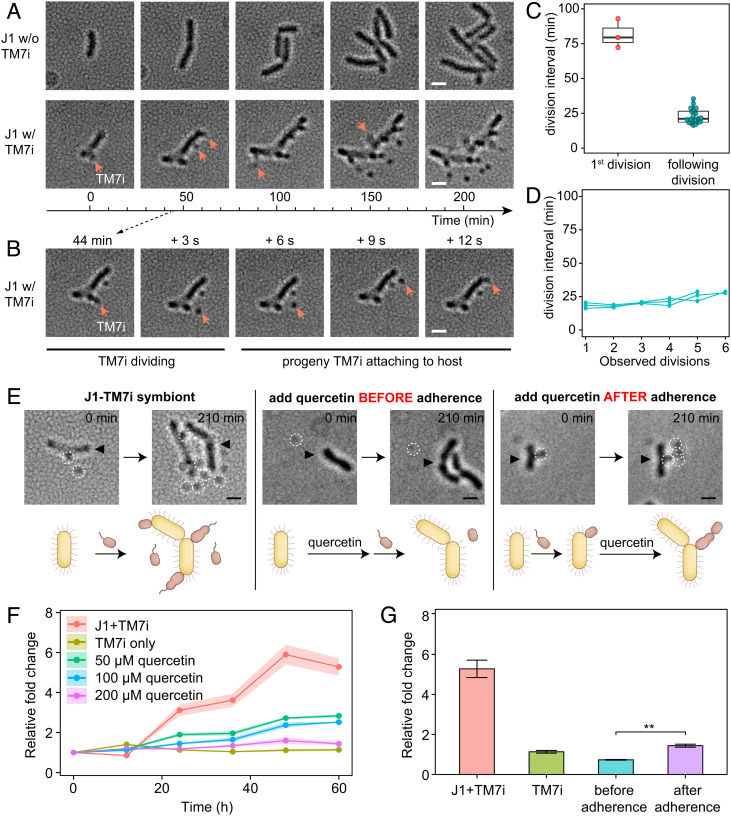Fig. 4.
T4P-dependent motility affects TM7i proliferation. (A) Long-term time-lapse imaging visualizes the propagation of the TM7i‒J1 symbiont (also see Movie S3). Red arrows indicate newly divided TM7i cells. (The scale bar is 500 nm.) (B) Propagation of a progeny TM7i cell to another localization site within 12 s. (C) The average division intervals differ for the first and the following divisions. (D) Continuous intervals of TM7i division after the first division. (E) T4P inhibition with quercetin blocks twitching motility and host infection. Compared with TM7‒J1 coculture, quercetin inhibited the twitching motility of planktonic cells and halted host infection. However, quercetin did not suppress the propagation of progeny cells for host-adhered TM7i cells. White dashed circles indicate TM7i cells, and black triangles indicate J1 cells. (The scale bar is 500 nm.) (F) Reduced TM7i growth under quercetin treatments compared with the no quercetin control. Log2-fold change values were generated by real-time PCR of the TM7i-specific 16S rRNA gene. (G) Timing of adding inhibitor affects growth rate; quercetin added before adherence shows an even slower TM7i growth (**P < 0.01).

